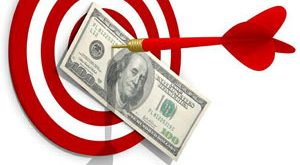In my last post, I established that the “rentier’s share” of interest — resulting from as Keynes put it the “power of the capitalist to exploit the scarcity-value of capital” — can be calculated as the real-interest rate on lending to the monetary sovereign, typically known as the real risk free interest rate. That is because it is the rate that is left over after deducting for credit risk and inflation risk. However, I have been convinced that my conclusion — that euthanizing rentiers...
Read More »The Subtle Tyranny of Interest Rates
Interest rates are the price of credit. They are the price of access to capital. Now, it is obvious that pricing credit is not tyrannical in and of itself. Interest compensates a lender for default risk and the risk of inflation eroding the purchasing power of the money that they lend. The tyranny I am getting at is subtle. It is the tyranny that Keynes pointed to when he proposed a euthanasia of the rentier. Keynes proposed that low interest rates would: mean the euthanasia of the rentier,...
Read More »The International Labour Organisation… Almost Correct
I have an article up on Al Jazeera this week. It may be the last journalistic article I write for some time as I start a new job next week. But this one deserves some brief discussion because the material it deals with is hugely important to the politics of the moment. In the article I discuss a joint report by the ILO, the OECD and the World Bank. The ILO have clearly spearheaded this one. It has their fingerprints all over it. The ILO are pretty fantastic really. They are one of the...
Read More »The Economic Consequences of the Overthrow of the Natural Rate of Interest
For quite a few months I have, on this blog, been alluding to a paper that I had written which showed that the natural rate of interest is implicitly dependent on the EMH in its strong-form in order to be coherent. I have finally published this paper (in working paper form) with the Levy Institute and it can be read here: Endogenous Money and the Natural Rate of Interest: The Reemergence of Liquidity Preference and Animal Spirits in the Post-Keynesian Theory of Capital Markets Some...
Read More »Noah Smith Fumbles Argument, Endorses Post-Keynesian Endogenous Money Theory
Economists say the darnedest things sometimes. They often say things that are factually inaccurate. Noah Smith put his foot in it recently when he claimed in a Bloomberg article: It seems like the only people who don’t instinctively believe in credit-fueled growth are academic economists. Now, this seems odd to me. In the article he notes that Post-Keynesians and Austrians do in fact think that credit fuels economic growth. Given that many of these economists hold academic positions...
Read More »Keynes’ Theory of the Business Cycle as Measured Against the 2008 Recession
In this post I will explore Keynes’ theory of the business cycle. He discusses his views in Chapter 22 of the General Theory and I think they hold up pretty well today. At the beginning of the chapter he notes that the business cycle — so-called, because it is not really a “cycle” at all despite what Keynes says in the chapter — is a highly complex phenomenon and that we can only really glean some very general features of it. Keynes opens with a very clear quote on what he thinks to...
Read More »On the Two Departments of Monetary Macroeconomics
At the moment I am doing some research for a project that I might be working on soon. The project will be to provide a useable introduction to Post-Keynesian theory for those working in financial markets. Actually, I hope to write a book on this in the future, so this project is something that I have been interested in for a long time. The more I studied Keynes’ own work and the work of some of his better interpreters the more I came to the same conclusion: Keynes was first and...
Read More » Heterodox
Heterodox





